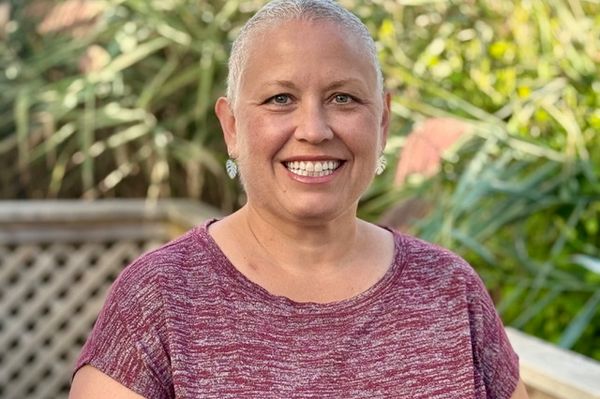Have you ever felt really bloated after eating a big meal? Or maybe you noticed that your stomach seems to be sticking out more than usual for the past few days? We’ve probably all experienced bloating or fullness after a particularly indulgent weekend or vacation. But did you know that persistent bloating, lasting for weeks or longer, is one of the early signs of ovarian cancer?
We often hear that ovarian cancer is a ‘silent disease’ with no warning signs. That’s because the signs and symptoms are often confused with gastrointestinal issues and are hard to pinpoint. However, there are symptoms women should know about and discuss with their health care providers if they don’t go away.
The four main symptoms women with ovarian cancer experience are:
- Bloating that lasts for weeks or longer
- Pain in the pelvic or abdominal area
- Trouble eating or feeling full too quickly
- Needing to urinate more frequently or urgently
Other women also mention feeling extremely tired, experiencing pain during sex, or being constipated. The signs can be subtle, so it may be difficult for women to recognize. And just because you have one or more of these symptoms does not necessarily mean you have ovarian cancer. This makes it difficult for women to know if they should be concerned, and that’s one of the reasons only a small percentage of ovarian cancers are diagnosed at an early stage.
The risk of a woman getting ovarian cancer in her lifetime is 1 in 77. Most women who are diagnosed are older than 45. The median age of diagnosis is 63. There is one type of ovarian cancer, however, that can be diagnosed in teenagers. Germ cell ovarian cancer begins in the producing cells of the ovary, as opposed to cells on the surface of the ovary or the cells that hold the ovary together.
We also know that ovarian cancer is hereditary, meaning that if your mother, sister, daughter or grandmother had ovarian cancer (or breast cancer), your risk is increased.
The most significant risk is a genetic mutation, specifically in the breast cancer gene 1 (BRCA1) or breast cancer gene 2 (BRCA2). Eastern European women and women of Ashkenazi Jewish descent are at higher risk of carrying BRCA1 and BRCA2 mutations. These genes are linked to breast cancer as well. So women with breast cancer also have an increased risk of ovarian cancer.
There are a few factors that actually lower your risk, including use of birth control pills, multiple pregnancies and breastfeeding. All of these factors result in less frequent ovulation, resulting in lowered risk for ovarian cancer.
Unfortunately, we still do not have an easy and effective way to screen for ovarian cancer. Therefore, women do not usually get diagnosed on a routine doctor’s visit, but rather when they go to the doctor because they are experiencing symptoms. The following tests can help detect ovarian cancer:
Pelvic exam: A health care provider can feel the ovaries for tumors by inserting his or her fingers into the vagina; however, many early ovarian tumors are difficult or impossible to feel.
Transvaginal ultrasound: An ultrasound wand is inserted into the vagina to view the uterus, fallopian tubes, and ovaries. Tumors can be seen by the wand but it can’t determine if the growth is cancer.
CA-125 blood test: A blood test to look for the protein CA-125, which is produced by ovarian cancer cells, can help determine if a woman has ovarian cancer. High levels of CA-125 are often found when a woman has ovarian cancer. However, high levels may also be associated with other conditions such as endometriosis or pelvic inflammatory disease. And not all women with ovarian cancer have high CA-125 levels.
Women should know that Pap tests and HPV tests do not detect ovarian cancer.
If a woman is diagnosed with ovarian cancer, her treatment will depend not only on the type of ovarian cancer and the stage, but also individual decisions based on whether she wants to keep her ovaries and uterus. Most women will undergo some type of surgery, whether they are removing only the tumor or removing the tumor plus uterus, ovaries, and fallopian tubes. Lymph nodes may be removed as well. If the cancer has spread, other organs may be affected and will need to possibly be removed as well.
Women may also receive chemotherapy, radiation therapy, and/or hormone therapy.
Newer targeted therapy, such as Avastin (a medication that cuts off blood vessels to a tumor) plus chemotherapy, has been effective at treating women with advanced ovarian cancer.
Questions to ask your health care professional
Focus on these questions when speaking with your health care professional:
- What are my personal risk factors for ovarian cancer?
- Should I have any tests other than my regular exam?
This resource was created with support from Genentech, Inc.






